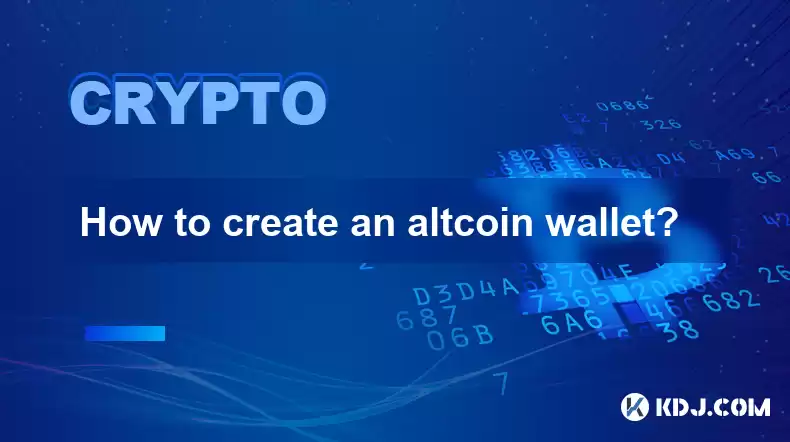-
 Bitcoin
Bitcoin $117700
-0.03% -
 Ethereum
Ethereum $3805
0.49% -
 XRP
XRP $3.098
-1.00% -
 Tether USDt
Tether USDt $1.000
0.03% -
 BNB
BNB $792.8
-1.72% -
 Solana
Solana $177.9
-1.95% -
 USDC
USDC $1.000
0.02% -
 Dogecoin
Dogecoin $0.2202
-1.55% -
 TRON
TRON $0.3278
-2.92% -
 Cardano
Cardano $0.7641
-2.43% -
 Hyperliquid
Hyperliquid $42.21
-2.68% -
 Sui
Sui $3.758
-1.58% -
 Stellar
Stellar $0.4080
-3.21% -
 Chainlink
Chainlink $17.75
-0.33% -
 Bitcoin Cash
Bitcoin Cash $591.8
4.96% -
 Hedera
Hedera $0.2561
-3.09% -
 Avalanche
Avalanche $23.34
-4.24% -
 Litecoin
Litecoin $110.7
1.96% -
 UNUS SED LEO
UNUS SED LEO $8.956
-0.01% -
 Toncoin
Toncoin $3.410
0.79% -
 Ethena USDe
Ethena USDe $1.001
0.03% -
 Shiba Inu
Shiba Inu $0.00001288
-1.82% -
 Uniswap
Uniswap $10.07
-2.06% -
 Polkadot
Polkadot $3.807
-2.27% -
 Monero
Monero $308.2
-2.15% -
 Dai
Dai $1.000
0.03% -
 Bitget Token
Bitget Token $4.521
-0.30% -
 Pepe
Pepe $0.00001134
-1.52% -
 Cronos
Cronos $0.1457
0.65% -
 Aave
Aave $274.9
-2.47%
How to create an altcoin wallet?
When creating an altcoin wallet, it's crucial to choose a reliable provider with strong security measures like two-factor authentication and ensure regular backups to protect against potential data loss.
Jan 05, 2025 at 01:20 pm

Key Points
- Choosing a suitable wallet type (hardware, software, custodial, non-custodial)
- Establishing strong security measures (two-factor authentication, seed phrases)
- Selecting a reliable wallet provider
- Funding the wallet with altcoins
- Backing up the wallet securely
Steps to Create an Altcoin Wallet
1. Choose a Wallet Type
- Hardware Wallets: Physical devices that store keys offline, providing the highest level of security but being more expensive and complex to use.
- Software Wallets: Desktop or mobile applications that store keys on your device, offering a convenient balance of security and accessibility.
- Custodial Wallets: Third-party services that hold your keys but provide ease of use at the cost of potential centralization and custodial risk.
- Non-Custodial Wallets: Wallets that give you complete control over your keys but require a higher level of technical expertise to manage.
2. Establish Security Measures
- Two-Factor Authentication (2FA): Requires an additional layer of verification, such as a code sent to your phone, when logging in.
- Seed Phrases: A series of words or numbers that can restore access to your wallet in case of device loss or damage.
3. Select a Reliable Wallet Provider
- Reputation: Research established companies with a proven track record in the cryptocurrency industry.
- Security Measures: Check for strong encryption, multi-factor authentication, and cold storage options.
- Customer Support: Ensure the provider offers reliable support channels for technical assistance and account inquiries.
4. Fund the Wallet with Altcoins
- Exchanges: Purchase altcoins from reputable exchanges and transfer them to your wallet.
- Direct Transfer: Receive altcoins from another wallet address.
- Mining or Staking: Generate new altcoins through cryptocurrency mining or staking mechanisms.
5. Back Up the Wallet Securely
- Physical Backups: Create physical copies of your seed phrase or wallet files and store them in multiple secure locations.
- Cloud Backups: Save your seed phrase or wallet backups on encrypted cloud storage services, but be aware of potential security risks.
FAQs
Q: Which altcoin wallet is the safest?
A: Hardware wallets generally offer the highest level of security due to their offline storage.
Q: Can I use the same wallet for different altcoins?
A: Yes, many wallets support multiple altcoins, allowing you to manage them all in one place.
Q: How do I recover a lost altcoin wallet?
A: If you have a backup of your seed phrase or wallet files, you can restore access to your funds on a new device.
Q: Can I create an altcoin wallet anonymously?
A: Some non-custodial wallets allow anonymous account creation, but it depends on the specific wallet provider.
Q: What are the fees associated with altcoin wallets?
A: Fees vary depending on the wallet type, provider, and transaction type. Some hardware wallets have a one-time purchase fee, while software wallets may charge transaction fees. Custodial wallets typically have higher fees to offset their ease of use.
Disclaimer:info@kdj.com
The information provided is not trading advice. kdj.com does not assume any responsibility for any investments made based on the information provided in this article. Cryptocurrencies are highly volatile and it is highly recommended that you invest with caution after thorough research!
If you believe that the content used on this website infringes your copyright, please contact us immediately (info@kdj.com) and we will delete it promptly.
- XRP, AI, and Price Projections: Decoding the Crypto Future
- 2025-07-31 15:10:13
- XRP Investment: Expert Opinions and the Potential for Explosive Growth
- 2025-07-31 15:15:12
- XRP Price: Whale Buys and Token Scoops—What's Next?
- 2025-07-31 15:30:12
- Imagen Network, RLUSD Payments, and Decentralized Applications: A New Era of Web3?
- 2025-07-31 14:30:12
- Meme Coins: Buy and Hold for the Long Term? Decoding the Hype
- 2025-07-31 14:30:12
- XRP Analyst's Market Outlook: Boom or Bust in the Crypto Wild West?
- 2025-07-31 15:35:19
Related knowledge

What is Chainlink (LINK)?
Jul 22,2025 at 02:14am
Understanding Chainlink (LINK): The Decentralized Oracle NetworkChainlink is a decentralized oracle network designed to bridge the gap between blockch...

What is Avalanche (AVAX)?
Jul 22,2025 at 08:35am
What is Avalanche (AVAX)?Avalanche (AVAX) is a decentralized, open-source blockchain platform designed to support high-performance decentralized appli...

What is Polkadot (DOT)?
Jul 19,2025 at 06:35pm
Understanding the Basics of Polkadot (DOT)Polkadot (DOT) is a multi-chain network protocol designed to enable different blockchains to transfer messag...

What is Litecoin (LTC)?
Jul 23,2025 at 11:35am
Overview of Litecoin (LTC)Litecoin (LTC) is a peer-to-peer cryptocurrency that was created in 2011 by Charlie Lee, a former Google engineer. It is oft...

What is Monero (XMR)?
Jul 21,2025 at 10:07am
What is Monero (XMR)?Monero (XMR) is a decentralized cryptocurrency designed to provide enhanced privacy and anonymity for its users. Unlike Bitcoin a...

How to add indicators to Ethereum chart on TradingView?
Jul 19,2025 at 07:15am
What Is an Ethereum Chart on TradingView?The Ethereum chart on TradingView is a visual representation of the price movement of Ethereum (ETH) over a s...

What is Chainlink (LINK)?
Jul 22,2025 at 02:14am
Understanding Chainlink (LINK): The Decentralized Oracle NetworkChainlink is a decentralized oracle network designed to bridge the gap between blockch...

What is Avalanche (AVAX)?
Jul 22,2025 at 08:35am
What is Avalanche (AVAX)?Avalanche (AVAX) is a decentralized, open-source blockchain platform designed to support high-performance decentralized appli...

What is Polkadot (DOT)?
Jul 19,2025 at 06:35pm
Understanding the Basics of Polkadot (DOT)Polkadot (DOT) is a multi-chain network protocol designed to enable different blockchains to transfer messag...

What is Litecoin (LTC)?
Jul 23,2025 at 11:35am
Overview of Litecoin (LTC)Litecoin (LTC) is a peer-to-peer cryptocurrency that was created in 2011 by Charlie Lee, a former Google engineer. It is oft...

What is Monero (XMR)?
Jul 21,2025 at 10:07am
What is Monero (XMR)?Monero (XMR) is a decentralized cryptocurrency designed to provide enhanced privacy and anonymity for its users. Unlike Bitcoin a...

How to add indicators to Ethereum chart on TradingView?
Jul 19,2025 at 07:15am
What Is an Ethereum Chart on TradingView?The Ethereum chart on TradingView is a visual representation of the price movement of Ethereum (ETH) over a s...
See all articles

























































































